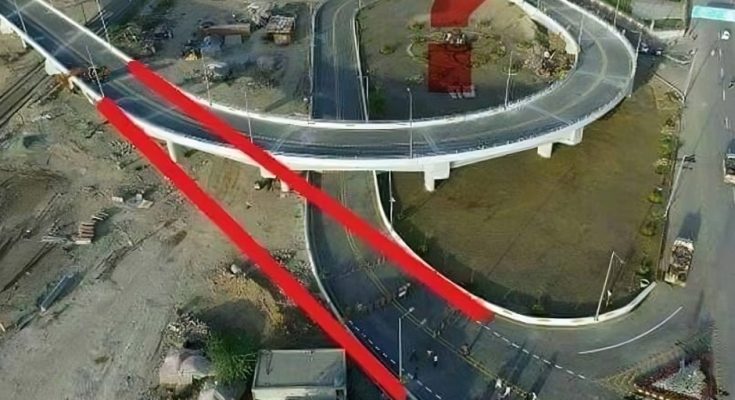The Dangers of Long, Straight Roads
One major reason why winding roads are commonly used is due to the risks associated with long, straight stretches of road. When a driver is traveling in a straight line at high speed for too long, their attention and vision can become fatigued. This is known as “highway hypnosis,” where the driver’s mind starts to drift, and their focus begins to slip away. The monotonous nature of straight roads, without any physical or visual stimuli, can make it easier for drivers to miss crucial signs or sudden changes in their surroundings.
In these situations, drivers are more prone to distractions or, even worse, to becoming drowsy. Drowsy driving is a leading cause of accidents, and straight roads at high speeds only increase this risk. A small delay in reaction, a missed road sign, or a lapse in judgment can easily lead to a serious accident. This is why winding roads are crucial—they force drivers to stay alert, constantly engaging their senses.
How Curved Roads Keep Drivers Focused
Curves in the road demand more from a driver. When the road is winding, drivers must constantly adjust their steering, monitor their speed, and be more attentive to maintain control of the vehicle. These actions stimulate concentration and help break the monotony of straight roads. Road engineers design these curves with driver safety in mind, ensuring that the radius and angle are optimized for smooth and manageable turns, even at higher speeds.
Curves also have the added benefit of naturally slowing down traffic. As drivers approach bends, they instinctively reduce their speed, which makes it safer to handle any potential hazards ahead. This natural slowing effect helps lower the risk of accidents, especially in challenging weather conditions or areas with poor visibility.
The Challenges of Steep, Straight Roads
Driving on steep, straight roads can introduce a different set of challenges. Steep inclines are particularly difficult for heavily loaded vehicles, like trucks, which can struggle to maintain control. When descending a steep, straight road, it can be challenging to manage speed and control, especially when momentum builds up. If a driver loses control during a descent, the consequences can be severe, particularly in areas with sharp drops and insufficient barriers.
Moreover, steep roads can limit visibility. Whether a driver is going up or down a steep road, it’s often harder to see what’s ahead, making it difficult to anticipate hazards such as debris, sharp turns, or sudden stops. By designing roads with gradual curves, visibility is improved, giving drivers a better sense of what’s coming and more time to react.
How Engineers Design Safer Roads with Curves
Road engineers don’t add curves just for variety—there’s real science behind how roads are designed. The goal is to balance driver comfort, vehicle control, and overall safety. Engineers carefully calculate the radius of each curve, taking into account the centrifugal forces that act on vehicles as they navigate turns. By optimizing the radius and reducing these forces, roads are designed to allow for smoother, safer turns without losing control.
This careful design is particularly important on high-speed roads or mountainous routes. Curves help distribute the forces experienced during turns, which helps drivers stay on course more easily. Gradual inclines paired with curves also help vehicles manage speed effectively, particularly during steep descents.
The Hidden Benefits of Winding Roads
Though winding roads may take a little longer to travel, their safety benefits are well worth it. Many drivers might see winding roads as an inconvenience, but in reality, they provide a more controlled and predictable driving experience. The gentle shifts in direction help prevent highway hypnosis, significantly reducing the chances of falling asleep at the wheel. Drivers are more engaged—constantly checking their surroundings, watching for road signs, and maintaining a proper speed.
Winding roads can also help improve fuel efficiency. Sudden stops and accelerations are more common on straight roads, which can lead to increased fuel consumption. In contrast, maintaining a consistent speed around curves is more efficient. Additionally, curves encourage drivers to maintain appropriate speeds, preventing unnecessary speeding and the risks that come with it.
Curved Roads vs. Straight Roads: A Safety Comparison
When comparing winding roads to long, steep, straight roads, the choice is clear. Straight roads may get you to your destination faster, but they come with increased risks—fatigue, distraction, limited visibility, and loss of control. Winding roads, on the other hand, foster safer driving habits. They naturally reduce speed, require greater focus, and offer better control over the vehicle.
The extra time it takes to navigate winding roads is a small price to pay for the significant reduction in accident risk. The safety measures built into curved road designs ensure a smoother, more controlled driving experience for everyone on the road.
Conclusion: Curved Roads Keep You Safer Behind the Wheel
In the end, winding roads are more than just a design feature—they’re a vital safety measure that keeps drivers alert, focused, and in control. Straight, steep roads may seem like the faster option, but they come with numerous dangers that can be avoided by adding curves. Engineers put great thought into these road designs, ensuring that vehicles can handle changes in terrain and speed as safely as possible.
The next time you find yourself on a winding road, take a moment to appreciate the careful planning that went into its design. While it might take a bit longer to reach your destination, the safety and peace of mind that winding roads provide are worth every extra minute.



